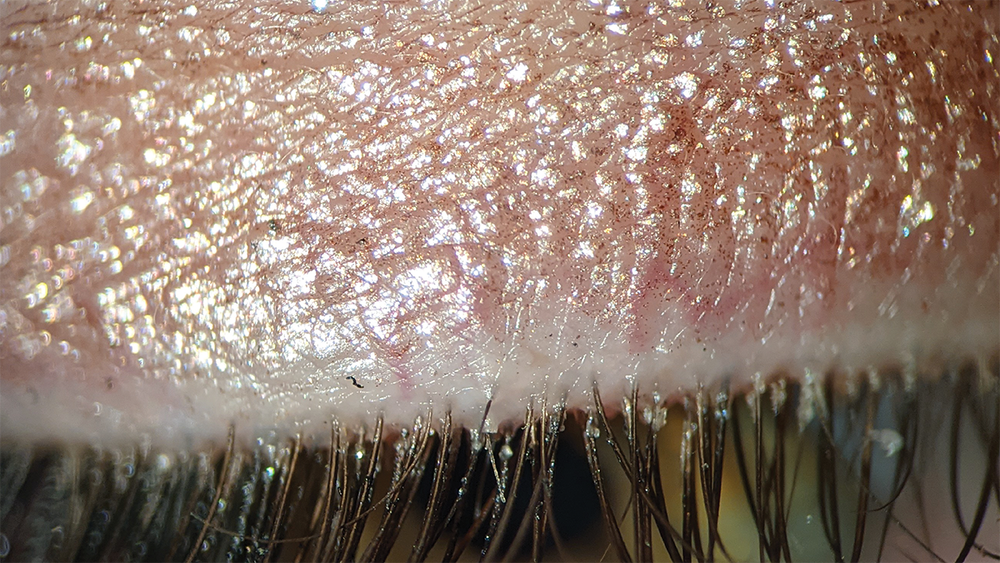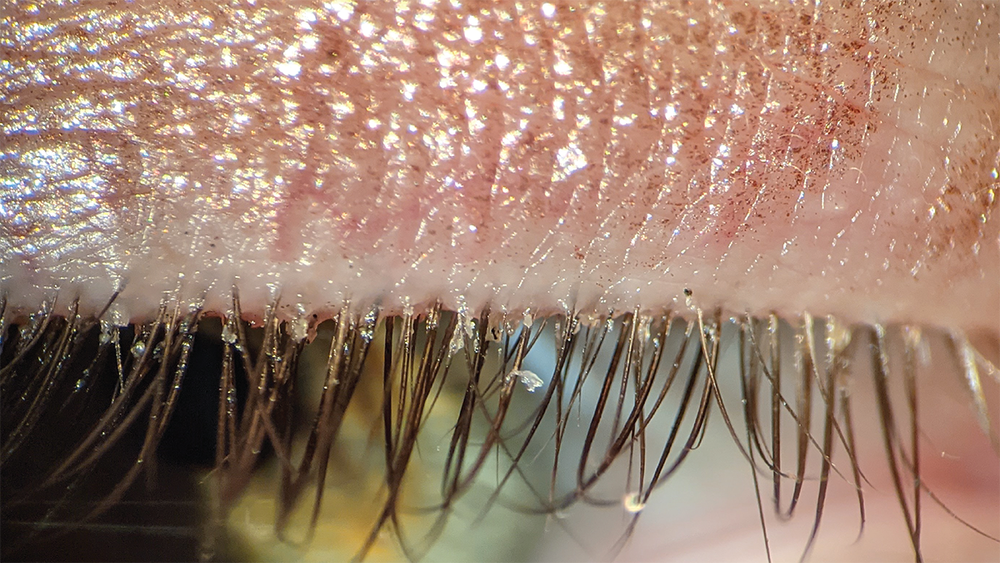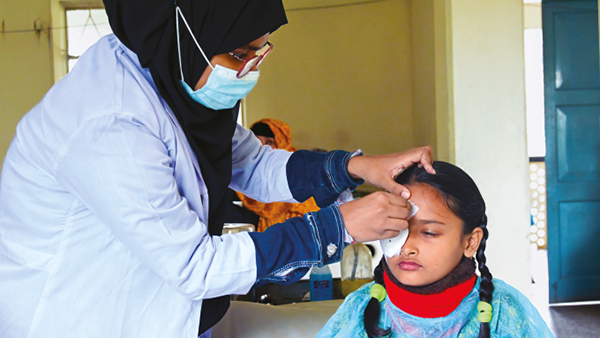You are viewing 1 of your 3 articles before login/registration is required
Honey, I Checked the Lids
Tarsus Pharmaceuticals’ campaign to urge optometrists to look for Demodex blepharitis pulls no punches on the image front
Unveiled at the American Academy of Ophthalmology (AAO) and American Academy of Optometry (AAOpt) meetings in September 2022, Tarsus Pharmaceuticals’ “Look at the Lids” education campaign encourages optometrists and other eye care professionals to screen for the lid margin disease Demodex blepharitis, with a view to identifying and diagnosing the disease sooner rather than never.
Around 25 million people in the US have Demodex blepharitis, which is caused by an infestation of Demodex mites that leave waxy debris composed of waste and eggs known as collarettes on the eyelashes of the unlucky many. According to Tarsus,100 percent of patients with collarettes have Demodex blepharitis.
Speaking with The New Optometrist, Tarsus’ Chief Commercial Officer, Aziz Mottiwala, says the campaign aims to educate eye care professionals about three key things: “The prevalence of disease, the impact it has on patients, and the simplicity of being able to diagnose this big problem.”
It’s called “Look at the Lids” because that’s all you need to do to diagnose the disease, he adds. “There’s a certain beauty to that simplicity – you can unlock many issues for patients just by taking a few moments to more closely examine the eyelids.”
So, does that mean optometrists haven’t been looking for at the lids – specifically for waxy waste? Mottiwala says some have been doing a good job – but a little overlooked my most. “Many optoms start with the eye open, they look at the cornea, they may take a cursory glance at the lid margin, but they don’t necessarily tell the patient to look down so they can properly examine the lids.” If they took just a couple of extra seconds to investigate, say Mottiwala, they might see collarettes that would lead to a confident diagnosis of Demodex blepharitis.
The Look at the Lids campaign doesn’t stint on photos of infected eyelids or close-ups of that pesky Demodex mite in action (we’re featuring a couple of the tamer examples here). I wouldn’t call the images NSFW – especially if you’re an optometrist – but the general public might find some of them, well, eye opening. “We wanted the campaign to be a call to action, to be authentic, hard-hitting, and honest,” says Mottiwala. “This is a very visual disease; we’re leveraging images from real patients to make the campaign stand out. When you look at other eye care campaigns, everything is just eyes! The lid images are quite unique in this sense – they tell a different story.”
In fairness, not all the images are alarming; overall, they show the whole spectrum of the disease, from mild to severe cases. “We want to emphasize that if you don’t do anything about this condition, it can get a lot worse,” adds Mottiwala.
Now, of course, educational campaigns can be very useful, but we’d be naïve to think there wasn’t a product hovering somewhere in the background. In this case it’s Tarsus’ still-in-development, TP-03, the first potential treatment for Demodex blepharitis. Tarsus filed a New Drug Application (NDA) for TP-03 with the US Food and Drug Administration (FDA) in September, which the agency has since approved. The Prescription Drug User Fee Act (PDUFA) target action date for TP-03 – that is, the deadline for the FDA to review the drug – is August 25, 2023.
To date, the company has completed two studies of over 800 patients that show that the twice-a-day eyedrop can “resolve the disease essentially at six weeks.” Mottiwala says the drug is able to get rid of the debris and the redness and, most importantly, “eradicate” the Demodex mite.
“We’re confident in the potential of TP-03 because there are no current therapies designed to target the root cause of the disease – the mite itself,” Mottiwala explains. “Existing disease management options like lid wipes and heated eye pads are essentially only treating symptoms, and many of these options are uncomfortable or cumbersome for patients. Our primary goal is to develop a solution that is not only effective, but easy for patients and eye care providers.”
The New Optometrist Newsletter
Permission Statement
By opting-in, you agree to receive email communications from The New Optometrist. You will stay up-to-date with optometry content, news, events and sponsors information.
You can view our privacy policy here
Most Popular
Sign up to The New Optometrist Updates
Permission Statement
By opting-in, you agree to receive email communications from The New Optometrist. You will stay up-to-date with optometry content, news, events and sponsors information.
You can view our privacy policy here
Sign up to The New Optometrist Updates
Permission Statement
By opting-in, you agree to receive email communications from The New Optometrist. You will stay up-to-date with optometry content, news, events and sponsors information.
You can view our privacy policy here









